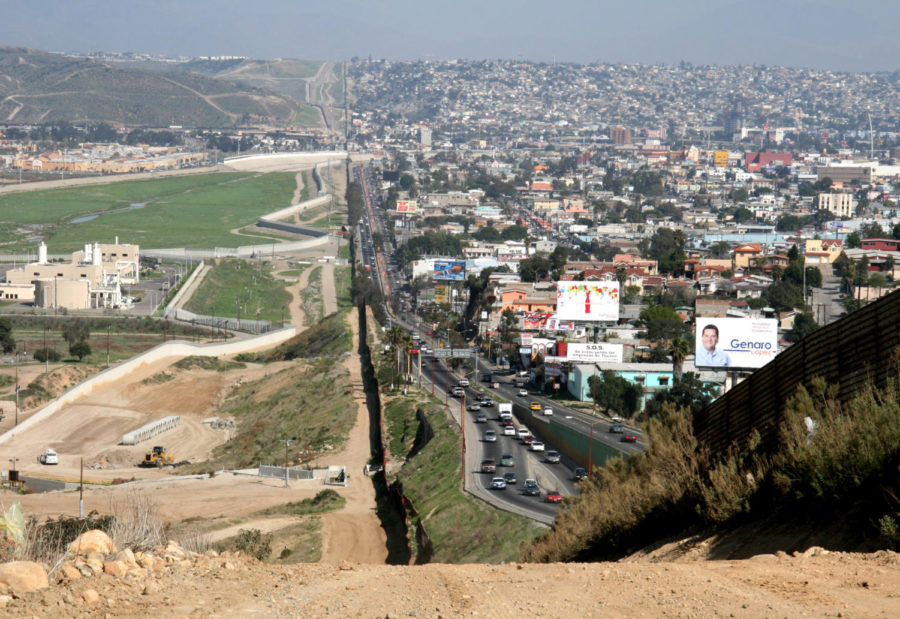Central American Migrants Seek a Brighter Future
A small fence separates densely populated Tijuana, Mexico (right) from the United States in the Border Patrol’s San Diego Sector.
A group of primarily Honduran migrants — called the migrant caravan — have spent the last two months trekking through Central America in order to reach the U.S.-Mexico border.
The group started on Oct. 13 when 160 Honduran migrants gathered in San Pedro Sula, Honduras. As the caravan moved through Central America it increased in size, gathering almost 5,000 people as well as smaller clusters numbering from hundreds to a thousand.
For many of the migrants, traveling through dangerous terrain is the only opportunity to escape the crime-ridden country of Honduras. America’s Bureau of Diplomatic Security implemented a travel advisory on Honduras in 2012 due to violence, which has led to 52 American deaths since 2010.
A large portion of the caravan remained in Mexico, and nearly 3,000 people have received visas. The first few migrants arrived in the town of Tijuana on Nov. 13. San Ysidro, one of the central routes to enter and leave Mexico, remains open despite the large influx of people.
Mexican citizens who are afraid of trade ending between the United States and Mexico are protesting the visas being offered to migrants. A fight broke out between locals of Tijuana and migrants. Onlookers reported that the police did not appear to intervene.
Citizens in Tijuana protested the caravan, claiming that Mexico does not have the necessary resources to shelter the migrants over a possibly lengthy period of residence.
In preparation for the caravan’s arrival, the President of the United States, Donald Trump, sent nearly 7,000 soldiers to the border, laid barbed wire, and established barricades. On Nov. 14, a dozen migrants were arrested for attempting to illegally cross the border near Otoy Mesa, a San Diego community.
The caravan members remain in temporary shelters constructed from sports fields and empty lots. Living conditions have been deemed hazardous and unsanitary by on-site medical personnel, with runoff from portable toilets and showers leaving mud puddles. The risk of infection and disease is high.
Though portions of the caravan have been transferred to El Barretal concert theatre, located in the Southern portion of Tijuana, many Honduran migrants distrust the Mexican government after the events of the last few weeks.
Under ideal conditions, San Ysidro is only capable of processing visas for around 40 to 100 people per day. One protest over the slow processing rate began peacefully but turned violent. Tear gas was used on those who began pushing against the border fence. The altercation resulted in 98 migrants arrested.
With thousands still en route toward the border, further circumstances and lasting consequences of the migrant caravan are yet to be foreseen.

My name is Dante Bernhardt and I am currently in my senior year at Cam High. I have a shoddy sense of humor, but I am proud of my handshake, so please...

















































































![Senior Ditch Day... Relaxation or Truancy? [Video]](https://achsstinger.com/wp-content/uploads/2017/10/IMG_7119-900x599.jpg)
![Heavy Rain Hits Cam High [video]](https://achsstinger.com/wp-content/uploads/2017/02/maxresdefault-900x506.jpg)



